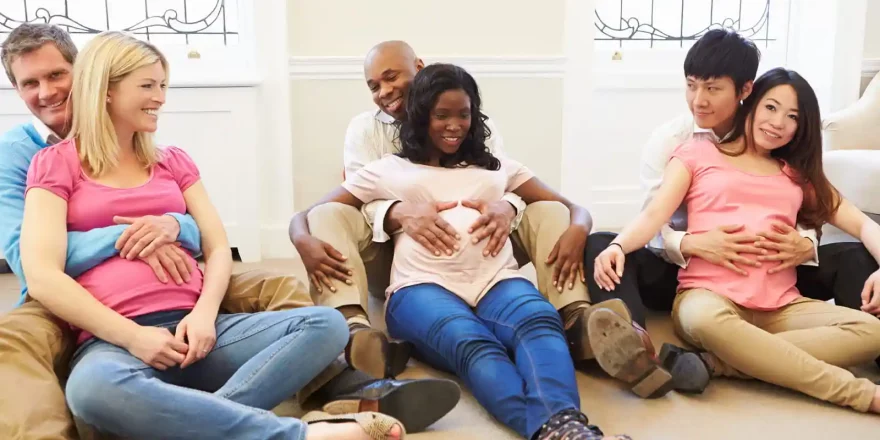Egg numbers are a defining issue for female fertility, and most eggs in the ovaries are in an immature state as ‘primordial follicles’. All a woman’s eggs were made during her time as an embryo in the womb, and they develop more when follicle-stimulating hormone (FSH) activates them. Once they’re activated, the eggs and tiny follicles begin a process called ‘recruitment’ that takes over a year.
Only a few of the original eggs develop into large mature follicles at the end of recruitment, and one ‘dominant follicle’ usually releases an egg each month at ovulation. The term for the total number of eggs in the ovaries is the “ovarian reserve” and:
- Most girls have about 180,000 eggs at puberty
- Most women have about 1,000 eggs at menopause
Testing
Ovarian reserve is crucial for a woman’s fertility, and many women underestimate the impact of age on ovarian reserve by 10 years. Knowing ovarian reserve is crucial to making informed decisions about fertility choices. Anti-Mullerian hormone (AMH) is released by medium-sized follicles during the recruitment process and is used to:
- Calculate ovarian reserve
- Predict a woman’s response to drug stimulation
- Indicate the number of eggs from IVF cycles
- Predict the age at menopause iii
AMH levels
However, AMH levels can’t predict embryo quality or the likelihood of a pregnancy. A low ovarian reserve plays a major role in many couple’s fertility and is associated with: iv
- Being older
- A small ovarian reserve at puberty
- Accelerated ovarian ageing
- Damage to the ovaries
Ovarian reserve
Models that map egg numbers show a gradual loss of eggs up to about 32-35. After this, the fall in eggs numbers increases, creating a “broken stick” pattern of egg/follicle numbers seen in the graph below: v

The ovarian reserve has a major effect on monthly conception rates, as seen above. However, the ages of 32, 35 or 40 aren’t ‘magic numbers’ but are ‘markers’ of relative fertility for most women. Variations in the ovarian reserve at puberty and how rapidly eggs are lost will affect the reserve and a woman’s fertility directly and indirectly:
- Low ovarian reserve reduces the number of eggs reaching the last stages of recruitment
- Fewer eggs and follicles mean less estrogen is produced
- Lower estrogen levels reduce the growth of the womb lining
- Thinner womb linings are less receptive to implantation
Egg quality
Healthy pregnancies come from good-quality eggs and sperm. While it’s possible to measure egg quantity it’s impossible to check egg quality without removing eggs. Because egg quality is generally better in younger women and they tend to have more eggs, as a rule, egg numbers are used to judge egg quality. However, egg quality depends on how well the egg and its follicle negotiated folliculogenesis and avoided damage. Egg and sperm quality is crucial for a baby’s health and egg quality varies with age because:
- The ability to repair damaged DNA reduces with age
- Toxins build up in the body over the years
- Oxidative stress levels naturally rise with age
High oxidative stress levels significantly reduce sperm quality, and predicting male fertility is more accurate using antioxidant levels than healthy sperm numbers.v Available research connects antioxidant levels to ovarian ageing, egg quality and responses to IVF drug stimulation, vi so increasing antioxidants may effectively reduce damage to ovarian tissue and improve female fertility. vii However, testing this would involve removing ovarian tissue, and we know herbs have antioxidant qualities, reduce FSH levels and improve ovarian function. vi
ii ‘Anti-Mullerian Hormone and Inhibin B in the Definition of Ovarian Aging and the Menopause Transition’ MaryFran R. Sowers et al., J Clin Endocrinol Metab. 93: 3478–3483, 2008)
iii ‘The value of anti-Müllerian hormone measurement in the long GnRH agonist protocol: association with ovarian response and gonadotrophin-dose adjustments’ E. Anckaert et al. Hum. Reprod. (2012) 27 (6): 1829-1839.
iv ‘Subfertility reflects accelerated ovarian ageing’. Helen S. Kok et al, Human Reproduction, Volume 18, Issue 3. Pp. 644-648.
Erickson, G, Glob. libr. women’s med., (ISSN: 1756-2228) 2008; DOI 10.3843/GLOWM.10289
vi ‘Total anti-oxidant status: a biochemical predictor of human male fertility’ A. L. Adeel et al. Andrologia Volume 44, Issue Supplement s1, pages 20–25, May 2012. DOI: 10.1111/j.1439-0272.2010.01131
vii ” Are apoptosis and oxidative stress increased in cumulus and granulose cells from oocytes of young women with low ovarian reserve?” Calonge, Rocio Nuñez et al. Reproductive BioMedicine Online, Volume 32, S1
viii “Protective effect of resveratrol against oxidative damage to ovarian reserve in female Sprague–Dawley rats” Pinar Ozcan et al. Reproductive BioMedicine Online Volume 31, Issue 3, September 2015, Pages 404-410
ix ‘Measuring the effectiveness of Chinese herbal medicine in improving female fertility.’ Trevor Wing and Elke Sedmeier. Journal of Chinese Medicine. 80. Feb. 2006. 22-28
Photo by Mimi Thian on Unsplash




